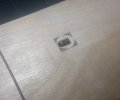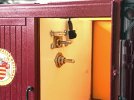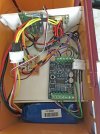JimmyB
Now retired - trains and fishing
My understanding of electronics is limited, so I have to base my knowledge on other people's information, so I hope somebody can provide me with a definitive answer.
I understand that an amplifier should have a speaker of a specific resistance (Ohms) and that a small resistance speaker used over a prolonged time can cause the amplifier to over heat and possibly fail. A case in point being the MLS requiring a 8 Ohm speaker, and although the Watts could be almost anything, less than 2 Watts and you lose volume, more than 2 Watts is a waste, whereas a 4 Ohm speaker could damage the MLS. My question is what is the effect on the amplifier if no speaker is connected at all. Why the question, I appreciate that the MLS volume can be muted with the "TV remote", however for ease I would just like to isolate the speaker, and why no volume, sometimes I like to be courteous to the neighbours (but only sometimes ).
).
Thanks for the responses in advance
I understand that an amplifier should have a speaker of a specific resistance (Ohms) and that a small resistance speaker used over a prolonged time can cause the amplifier to over heat and possibly fail. A case in point being the MLS requiring a 8 Ohm speaker, and although the Watts could be almost anything, less than 2 Watts and you lose volume, more than 2 Watts is a waste, whereas a 4 Ohm speaker could damage the MLS. My question is what is the effect on the amplifier if no speaker is connected at all. Why the question, I appreciate that the MLS volume can be muted with the "TV remote", however for ease I would just like to isolate the speaker, and why no volume, sometimes I like to be courteous to the neighbours (but only sometimes
Thanks for the responses in advance



